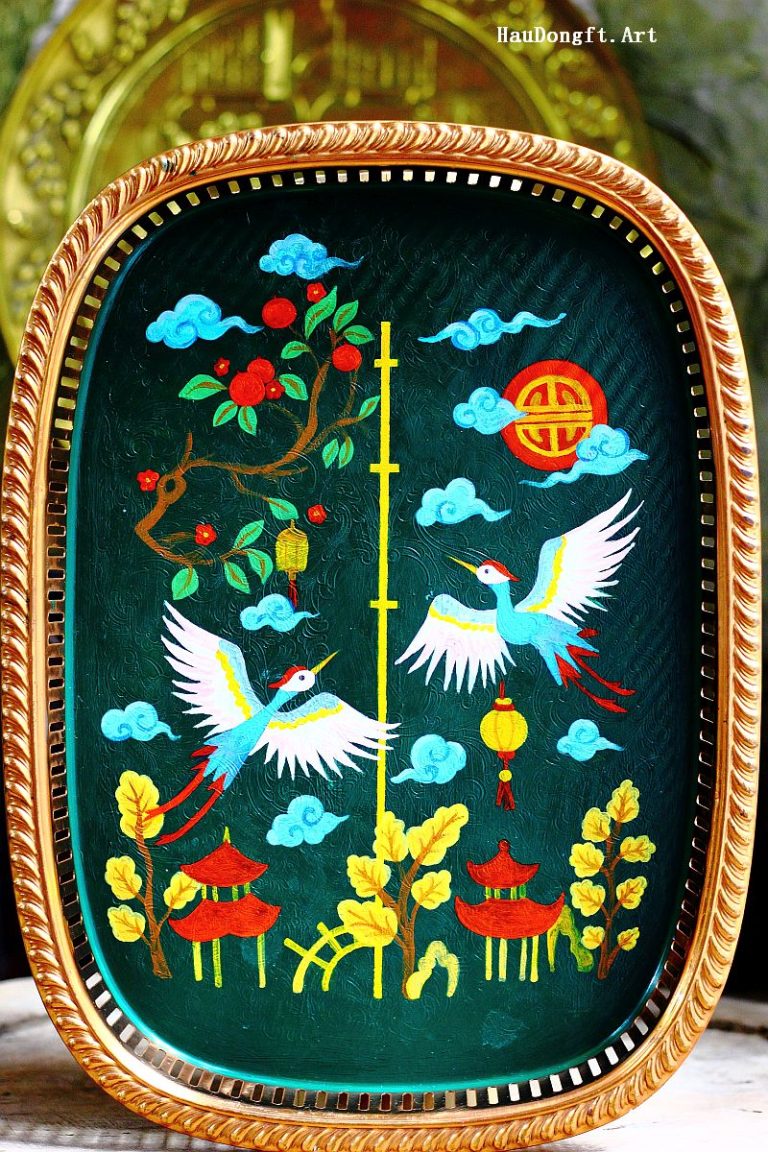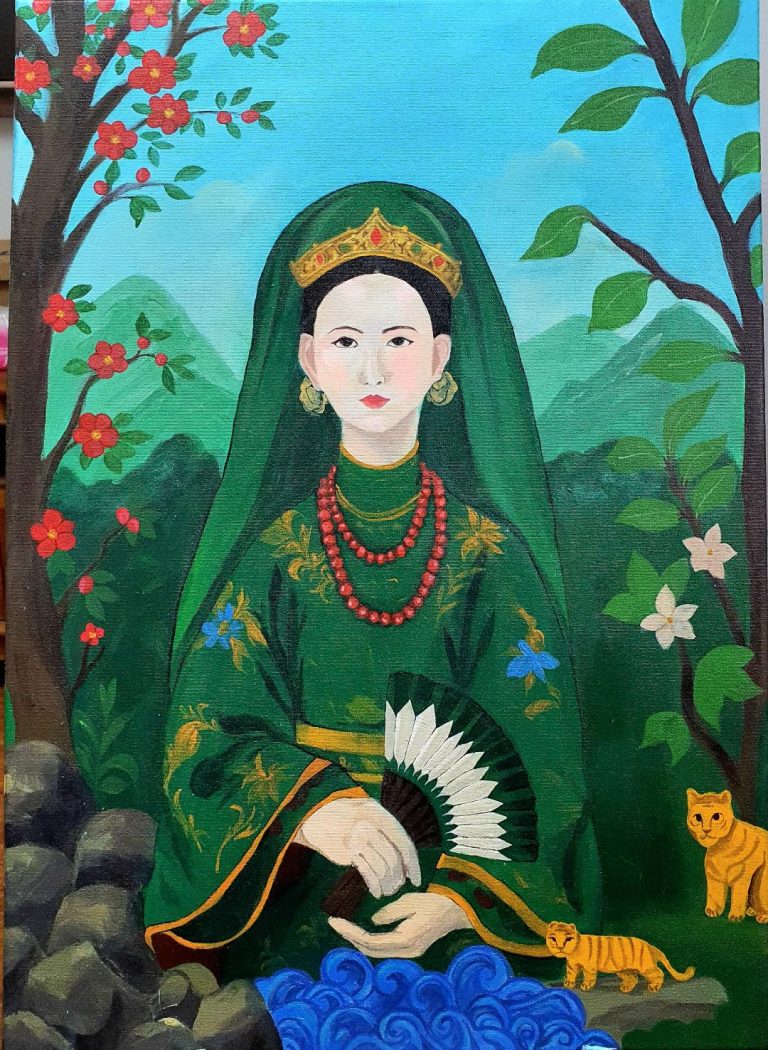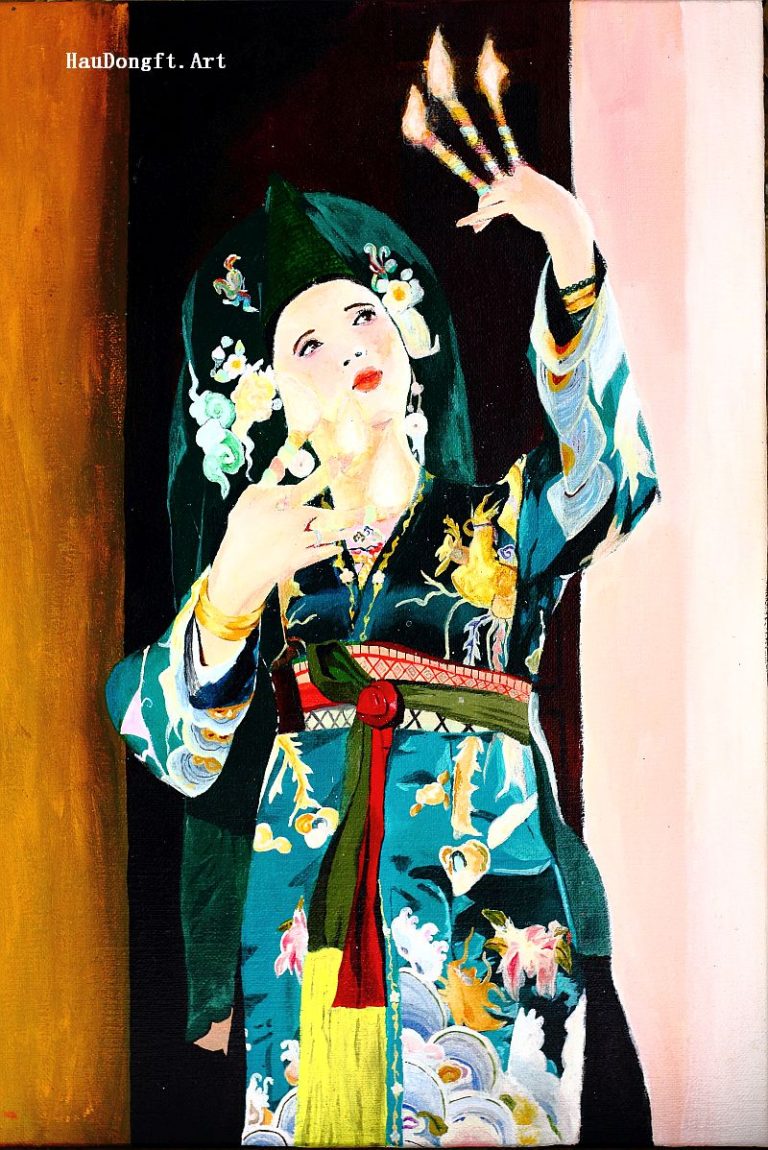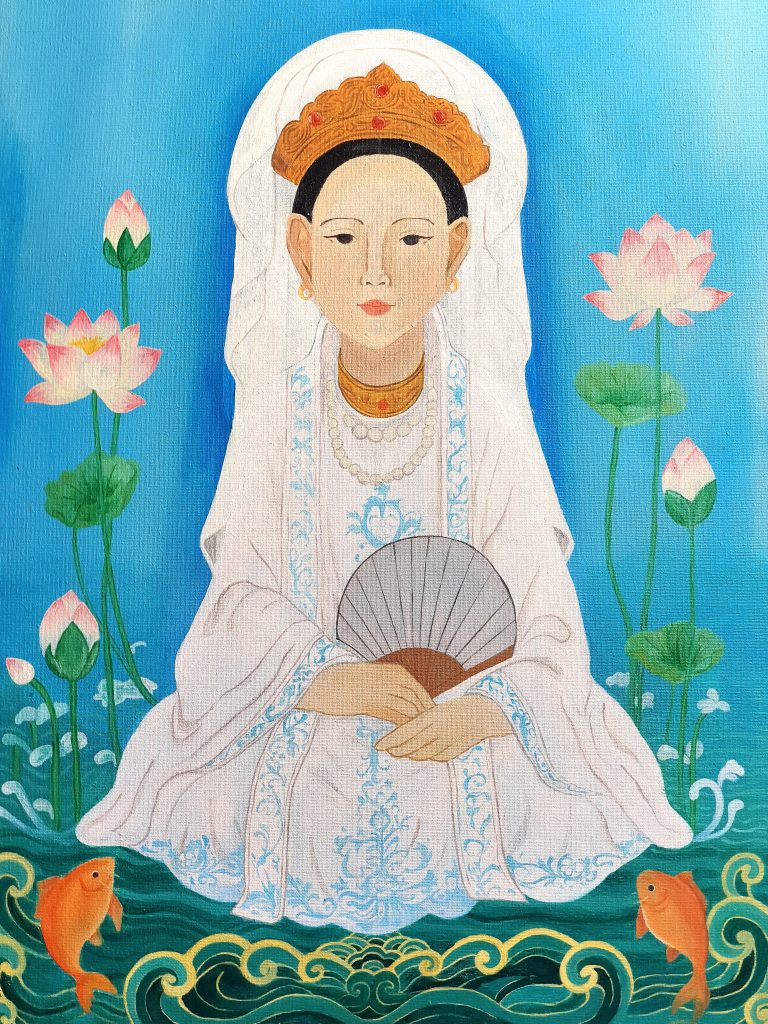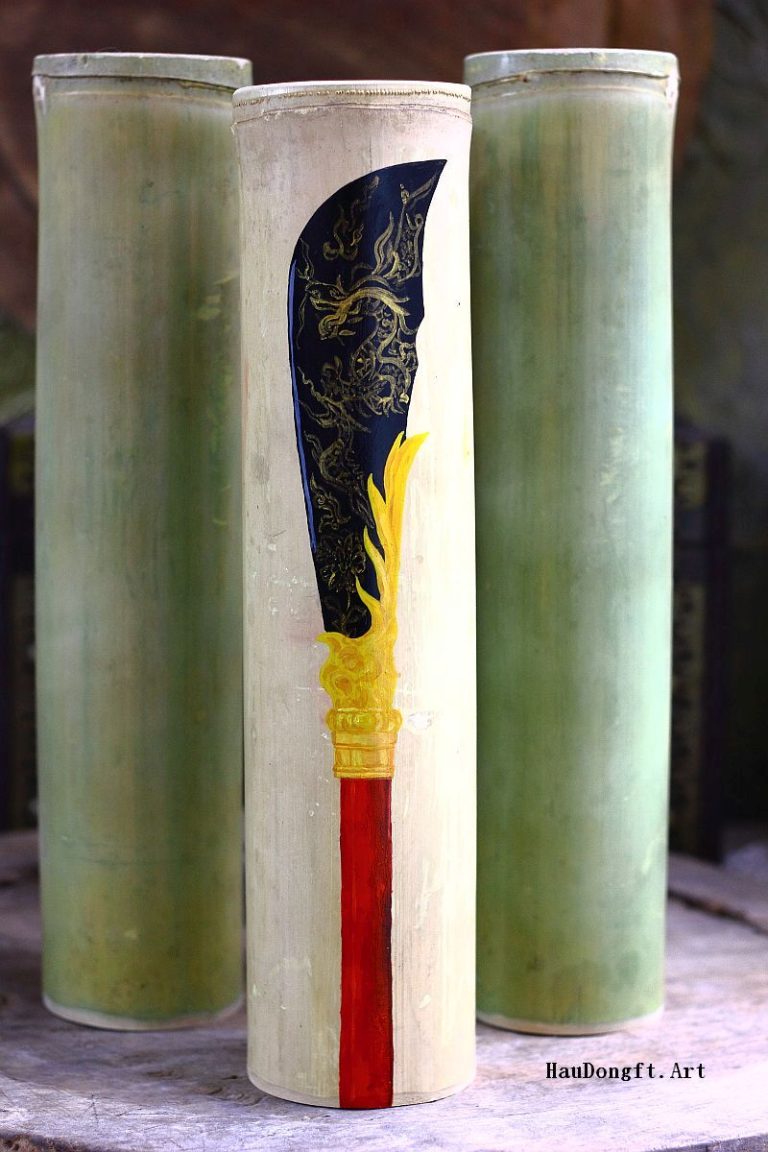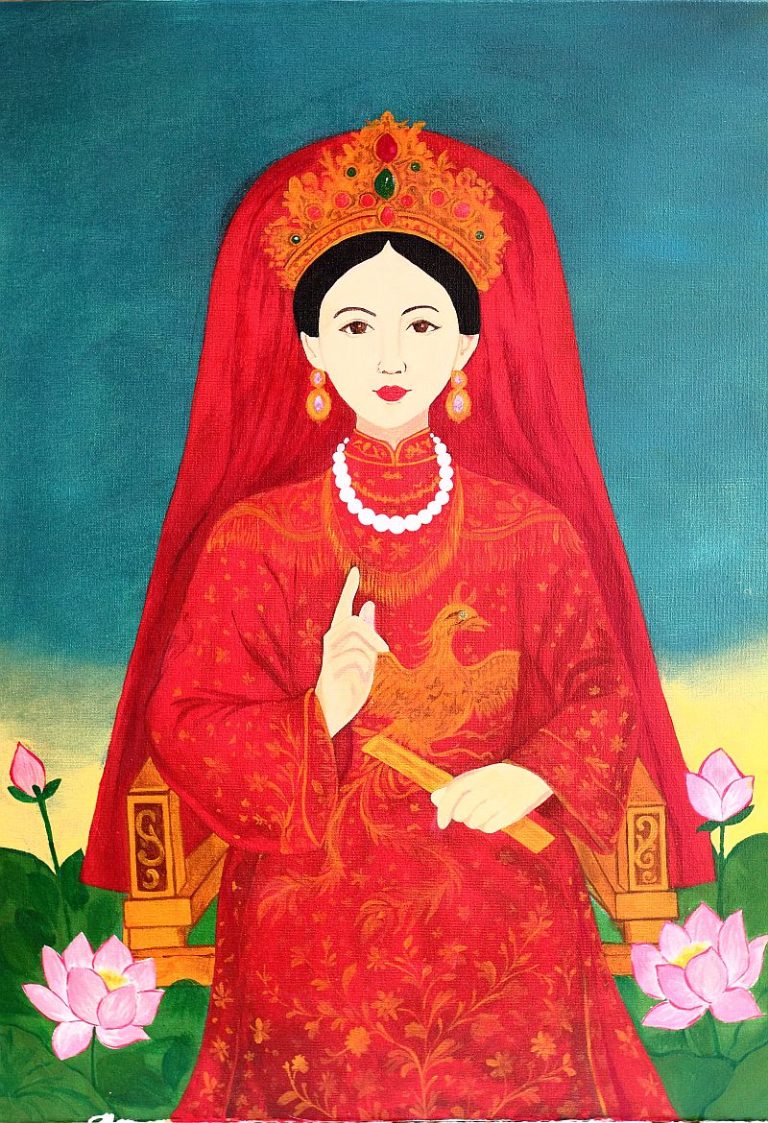Attending a hầu đồng session is like exploring a living museum, where layers of colors and symbols emerge through the incarnations of deities descending into the bodies of mediums—expressed via ritual songs (hát văn), music, dance movements, and especially an extraordinarily rich system of costumes.
The ceremonial headscarves and ritual robes—known as khăn chầu, áo ngự—used by mediums in the practice of Mother Goddess belief are remarkably diverse. In the conventional understanding, serving 36 giá đồng (ritual incarnations) requires 36 sets of costumes, accompanied by numerous accessories such as hairpins, combs, bracelets, necklaces, xà tích (amulet chains), belts, nets, veils, chest ornaments, flags, sabers, swords, bows, and arrows. Based on the pantheon of deities worshiped in temples and shrines, costumes are classified for male and female deities—such as the ranks of Quan Lớn, Quan Hoàng, Chầu Bà, Thánh Cậu, and Thánh Cô.
-
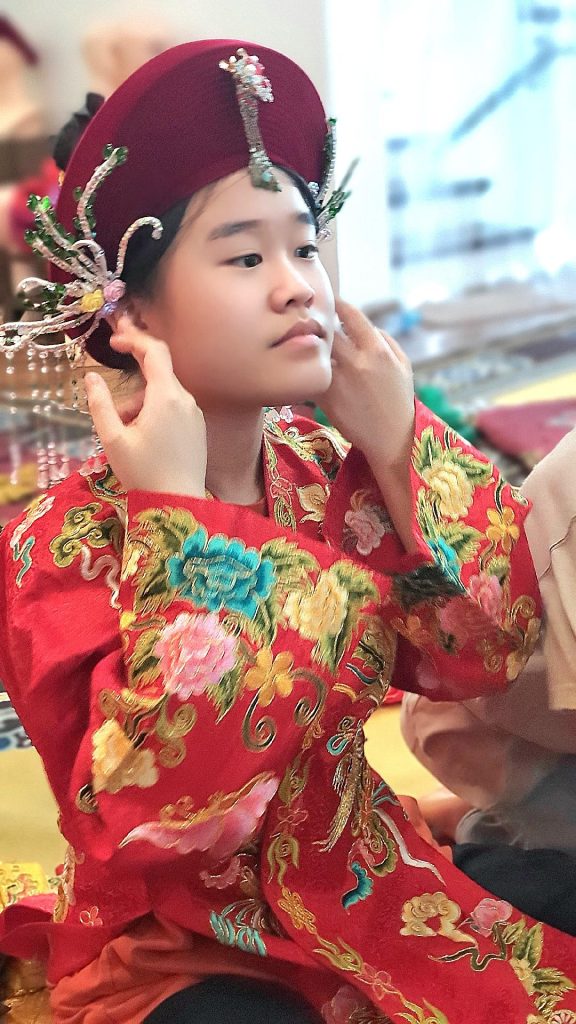
-
Me in Mother Goddess’ costume at a Ritual Rehearsal
-
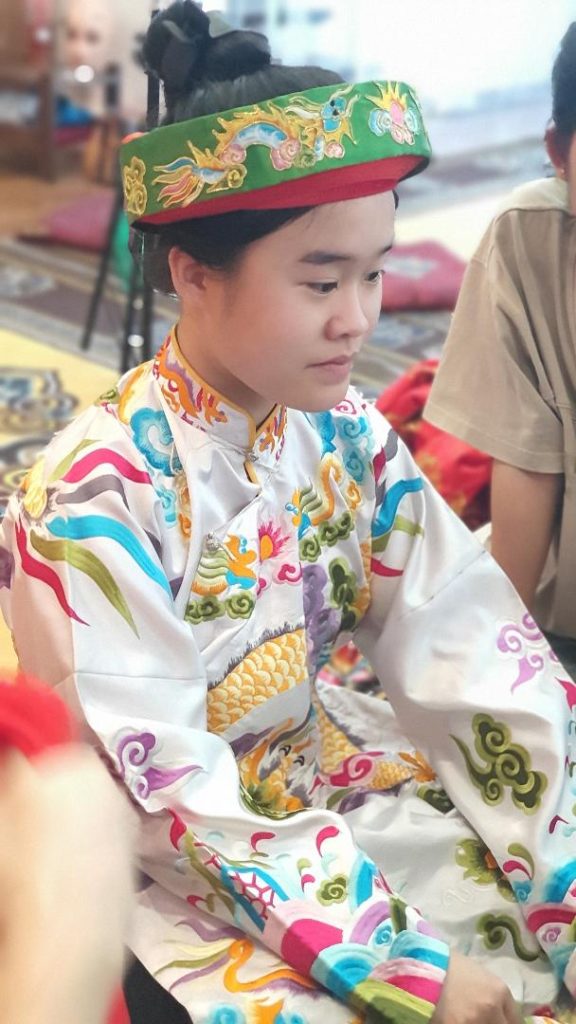
-
Me as the 3rd Mandarin
-
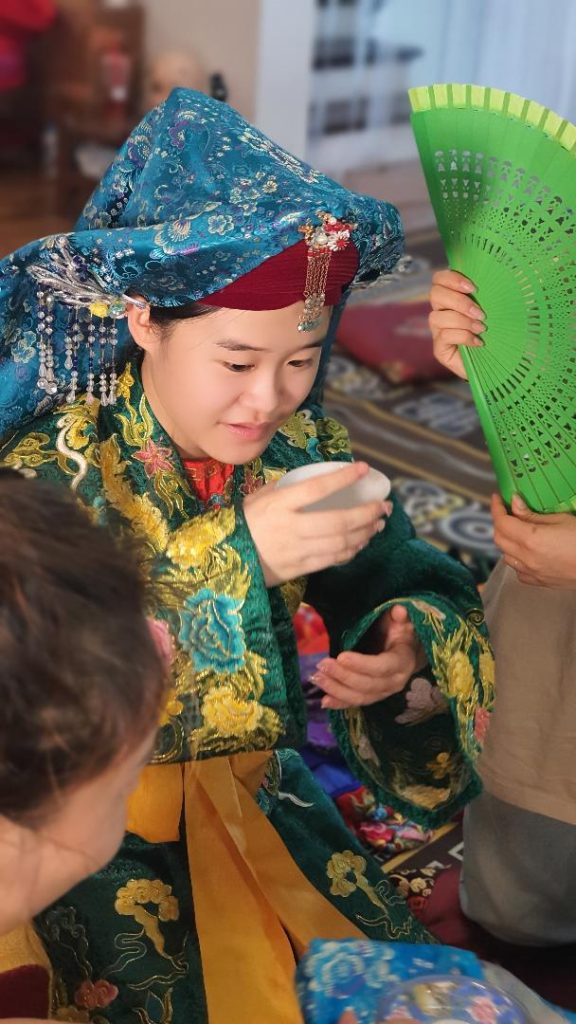
-
This is Bao Anh transfigured as the 2nd Dame of the Mountains & Forests Realm in a workshop
-
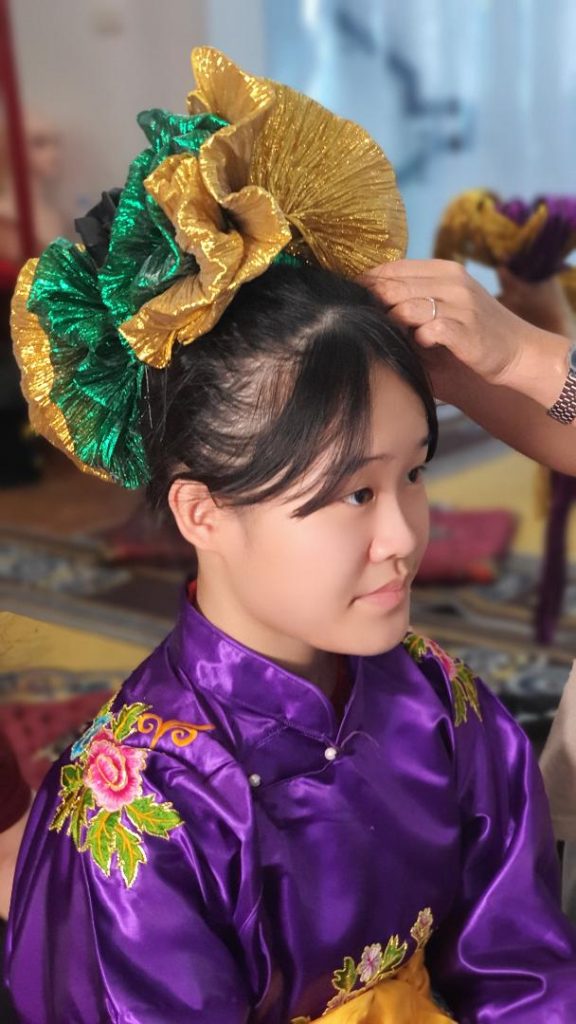
-
Me as the Little Princess
According to scholars of Mother Goddess worship and veteran mediums, a typical repertoire includes five Quan Lớn, three Quan Hoàng, four Chầu, five Cô, and two Cậu- amounting to roughly 20 different ceremonial costumes, each with traditional prescriptions on colors, patterns, and accompanying ornaments. Ritual attire is usually made of brocade or silk, originating from Vietnam, China, Korea, or other countries. Male deity costumes are woven with motifs of dragons, dragon medallions, clusters of longevity symbols (shou), while female deity costumes are adorned with phoenixes, peacocks, floral branches, or the “Four Seasons Flowers.” Wealthier mediums commission exquisitely embroidered garments with shimmering silk threads and metallic cords, while others opt for simpler embroidery in colored wool.
The most striking image for attendees is the red khăn phủ diện (face-covering veil). This veil accompanies the medium throughout their spiritual career, regarded as their “destiny veil.” During a ritual, the veil may be cast or drawn dramatically. The dignity of the Quan incarnations and the grace of the Cô incarnations are conveyed not only through the mediums’ expressions and gestures but also through their costumes. Many female mediums often serve male deities such as the Quan Lớn or Đức Ông, while many male mediums serve female deities such as Chầu Bà or Thánh Cô. Regardless of gender, their embodiment of the deities is often so convincing that their presence captivates the audience.
For instance, medium Nguyễn Văn Mười of Bắc Giang, known for serving Cô Đôi Cam Đường, describes: “When she descends, I wear a green four-panel dress (áo tứ thân), a crow-beak headscarf (khăn mỏ quạ), and a large flat hat (nón quai thao) like the quan họ singers of Kinh Bắc. On my shoulders, I balance a yoke with bundles of cloth at both ends.” Experienced female mediums often serve high-ranking male deities. As shared by Madame Lê Nhung Tuyết, a medium of Tân Ninh Temple in Bắc Giang with over 40 years of practice: “I frequently serve Đức Ông Nhà Trần.”
Traditional rules strictly prescribe the colors of garments for each deity: Đệ Nhất Quan wears red, Đệ Nhị wears green, and Đệ Tam wears white. While designs and motifs may vary, the color scheme is the most stable marker: deities of the Heavenly Palace wear red, Forest Palace green, Water Palace white, and Earth Palace yellow. Thus, costumes and accessories signal the identity of the descending deity to participants.
When serving a Child Goddess (Cô Bé), mediums wear playful costumes—green or indigo short tunics, or bi-colored robes in red and green crossed over the chest, secured with a sash, with legs wrapped in cloth bindings, and often carrying a bow, flower basket, or silver ornaments. Serving a Page (Thánh Cậu), mediums may wear short military jackets, cross-folded turbans, floral armbands, and jingling ornaments to convey youthful liveliness. By contrast, when serving the Mandarin (Quan Lớn), the robes are brocaded with dragon emblems, paired with folded turbans and embroidered belts of martial grandeur.
Costumes also reflect local traditions: serving the Joaf Bình Dame (Chầu Hòa Bình), mediums wear short jackets like those of Mường women; serving the 6th Dame (Chầu Lục), they adopt headdresses similar to those of northern ethnic minorities. Historical fashion is likewise preserved: Hanoi women’s coiffed turbans of the early 20th century are still worn in the Mother Goddess (Mẫu) incarnations, and the peach-pink halters (yếm) of northern lowland women are creatively adapted in the Cô incarnations.
Beyond garments, ritual jewelry and props are abundant: fans, flags, swords, wine gourds, and poem pouches. Female deities’ incarnations often require earrings, rings, necklaces, and xà tích, whose jingling sounds merge with the music and chanting, intensifying the atmosphere.
Through artistry and symbolism, the costumes of hầu đồng elevate the rituals to a level of sacred performance. Over time, they have evolved in design, yet continue to embody both the dignity of the deities and the changing aesthetics of society.
